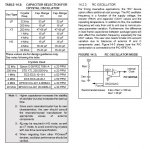I am aware the X2 parts can use either an internal resonator or an external resonator when timing accuracy is important.
Is there any other benefit to using the external resonator? Does it improve the accuracy of outgoing higher baud rate (ie. 115200) serial coms or I2C coms for example?
Is there any other benefit to using the external resonator? Does it improve the accuracy of outgoing higher baud rate (ie. 115200) serial coms or I2C coms for example?


